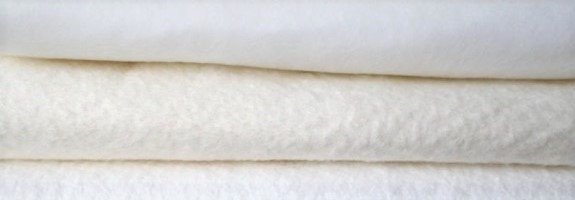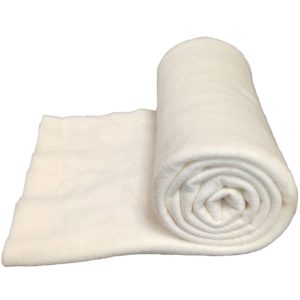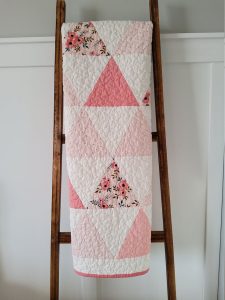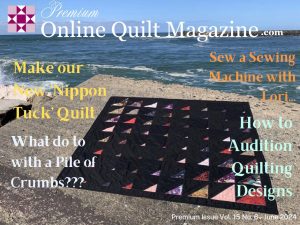

How to Choose the Right Batting for Your Quilt
May 17, 2023

Hi!
Today we’re talking all about batting (or wadding) – the unsung hero of any good quilt. Choosing the right batting for your quilt can make a big difference in the finished product, and its look, warmth and feel, so let’s dive in and talk about how to pick the perfect batting for your quilt.
First things first, let’s talk about fibre content.
Batting these days is available in a variety of fibres, including cotton, wool, polyester, bamboo and blends. Each of these fibres have their own pros and cons, so it’s important to consider what end result you’re looking for, for your quilt, and choose your batting accordingly.

Cotton Batting –
Cotton batting perhaps the most popular choice for its natural feel and breathability. It’s also great for quilters who prefer a flatter, more traditional look. This batting is made from 100% cotton fibres, and it’s a great choice for quilters who prefer a flatter, more traditional look.
Cotton batting tends to shrink more than other types of batting, which can create a slightly puckered look in the finished quilt. Many quilters love this ‘aged quilt’ look, and machine wash their quilts as soon as they’re finished, just to get this effect.

(Image from Etsy)
It’s also important to note that cotton batting may not be as warm as other types of batting, so it may not be the best choice for quilts that will be used in cold climates.
Cotton batting is however, easy to sew, whether by machine or hand, and it’s relatively cheap to buy.

Wool Batting –
Wool batting is another natural option that provides a lot of warmth and loft, making it a good choice for colder climates or for quilts that will be used in the winter months. It’s usually made from sheep’s wool and it has a soft, luxurious feel.
Wool batting tends to be more expensive than other types of batting, but it’s a great choice for when you want quilts for warmth, or for those who want a really puffy, fluffy look to their quilt. One thing to keep in mind with wool batting is that it may need to be hand-washed or dry cleaned, as it can shrink and felt if it’s exposed to heat and agitation.
Wool batting is often preferred for hand quilted projects.

Polyester Batting –
Polyester batting is a cheaper option that is easy to find and machine washable, making it a good choice for everyday quilts or those that will see a lot of wear and tear. It’s made from polyester fibers, and it tends to be a bit thicker and loftier than cotton batting.
One thing to keep in mind with polyester batting is that it can be frankly quite awful to sew through (!) and many longarm quilters will not quilt with it at all. Due to the loft / bulk, it’s not the best choice for intricate quilting designs, but if you’re making lots of charity quilts (for example), it might be a good option, for simply quilted quilts that can be machine washed by others easily.
Having said that, there are some great Poly / Cotton batting blends available, that are both cheap, and are easy to sew (with a flatter loft), and still give great drape, making them suitable for most everyday quilts.

Bamboo Batting –
Bamboo batting has been a relatively new type of batting on the market in recent years, and it’s quickly gaining a following among quilters. Made from a blend of bamboo and cotton fibers, bamboo batting has a silky, soft feel that’s perfect for lightweight quilts or those that will be used in warmer climates.
One of the key benefits of bamboo batting is its eco-friendliness. Bamboo is a renewable resource that grows quickly and requires little water or pesticides to thrive. Additionally, bamboo batting is naturally antibacterial and hypoallergenic, making it a great choice for people with sensitive skin or allergies.
Another benefit of bamboo batting is its drape. Because it’s lighter in weight than other types of batting, bamboo batting gives quilts a softer, more fluid feel that drapes beautifully. This makes it a great choice for quilts that will be used as throws or for snuggling up on the couch.
Once you’ve decided on the type of fibre you want, it’s time to consider the weight and loft of the batting. Batting comes in different weights, which refers to the thickness and density of the material. A lighter weight batting will give your quilt a flatter, less puffy look, while a heavier weight batting will provide more loft (puffiness) and warmth. It’s important to choose a weight that’s appropriate for the type of quilt you’re making and the climate in which it will be used.
And what about doubling up?
Double batting refers to using two layers of batting in a quilt instead of just one. There are a few reasons why a quilter might choose to use double batting.
First, using double batting can create a really warm and cozy quilt that’s perfect for snuggling up in the winter months. By using two layers of batting, you’re essentially doubling the insulation value of the quilt.
Secondly, quilting with double batting can create a puffy, plush look to the quilt that can be really striking and can be a great way to add more texture and dimension to a quilt. You will find a lot of Show quilts use two layers of batting to really highlight intricate quilting, and show off quilted designs. Quilters can mix and match batting types here too – cotton on the bottom, with wool on the top, for example.

(image from @lakeonestudio on Instagram)
It’s important to note however, that using double batting can make the quilting process a bit more challenging. Because there’s more material to work with, it can be harder to manipulate the quilt through the sewing machine. If it’s a big quilt, this might be the job for a longarm machine.
As with most battings, if you’re considering using double batting in your next quilt, be sure to practice on some smaller projects first to get a feel for how it handles.
Choosing the right batting for your quilt is an important (and often overlooked) step that can make all the difference to your finished quilt. By considering fibre content, weight and loft and type of quilting, you’ll be well on your way to creating a quilt that’s warm, comfortable, and beautiful.
Happy quilting!



A good description of advantage of various types of batting. Thank you
What is the best for hand quilting? You mentioned cotton, but is that going to be easier to quilt through than a low loft polyester?
I found it challenging to hand quilt through 80/20 cotton/poly blend – so much so that I am taking it out to start over. Help, please.
Hi Marcia! I know a lot of quilters will have definite preferences for batting for hand quilting. I have only hand quilted smaller projects personally, and I used a cotton batting for that, which worked fine. I tend towards bigger stitch quilting though. I know low loft polyester doesn’t have to be quilted as closely together, and that many hand quilters prefer wool, as they feel the needle can pass through it more easily.
The best step I think is to try some small practice samples first. Use the same fabrics that are in your quilt if you can, and try out a couple of different battings in the samples. In the end, it’s going to come down to personal preference, and how small or large your quilting stitches are. Good luck!!
Thank you! Thank you! Thank you! This is one of the best written and presented articles on batting I’ve read in a while.